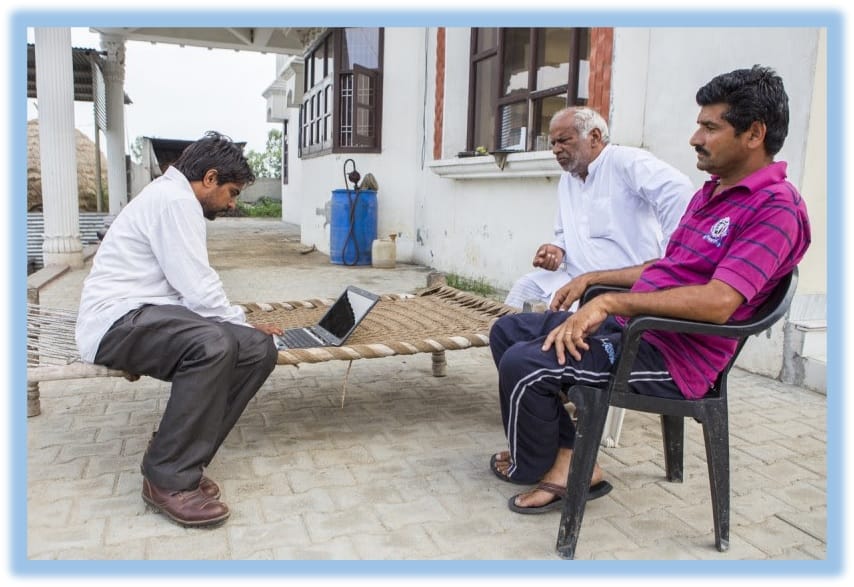We plan for Smart Cities, What about Vibrant Villages?

India lives in her villages is an oft repeated quote attributed to M. K. Gandhi. This was stated by him prior to 1948 which is three-quarters of a century ago. Today, this statement feels strange as the reality is that our country lives neither in her cities nor in her villages. As a sweeping generalization, we can boldly state that today Bharatiyas happen to reside in cities and send money back to villages where their families just exist. There is no life worth mentioning in either place!
The cities are extremely crowded, unhealthily polluted and prohibitively expensive causing the population to be tensed and irritated a large part of the time, the villages are behind on several fronts with impoverished infrastructure, technological advancements, latest information input from right sources and lack the support required to enhance the inherent skills and abilities that are present within.
Most of the population that relocates to the cities from the villages does menial or mundane jobs that require very basic skills to accomplish. They come to work as drivers, cleaners, provide delivery services, construction labour and so on at the lower paying end of the spectrum. Some, especially from small towns, also land at big cities to do jobs such as programming, banking and marketing services, technicians, nursing, horticulturists and so on at a relatively higher pay level.
A majority of those coming from the towns and villages hold no aspiration as far as their work is concerned other than making ends meet. They do not get the input nor the guidance back home from genuinely concerned people or agencies. They attempt to “grow” by imitating the others. By the time they catch up with the rest in the city, they fall behind by at least one generation in the rat race. Everything is actually mindless and distressingly soulless!
Despite the growing hellish nature of the city, it is considered as the place where everyone “ought to be”. With more people from the towns and villages relocating to the cities, those who were city dwellers from earlier on become even more isolated from the reality of villages. The city is believed to be the place where everything “happens”.
In the context, the ambitious central government is focussing on building “Smart Cities” to cater to the burgeoning population that is relocating from the villages. There was a talk by Sri Deepak Bagla, the Managing Director and CEO of Invest India, the National Investment Promotion and Facilitation Agency promoted by the Government of India. While everything about the money economy is wonderful to hear about, the mention of thirty villagers moving to the cities every minute makes one wonder what is fundamentally wrong that disrupts the judiciousness of the economic process itself. [The talk can be listened to at https://www.youtube.com/watch?v=45PrXujlQCo – the point that is of concern is in the talk 16.15 onwards.]
And one was wondering why we are rushing to create another USA when we know very well the extent of negative outcomes it has created for them. Why are we in the copy-paste mode for even things about which we have the wisdom of hindsight?
What can we do?
In the present scenario, where we are speaking about reviving our traditions even as we embrace technological advancements, the cities appear to be the last places where the seeds can be sown towards something that is practical. We need to start from the villages. Primarily we need to bring back Village Pathasalas and Gurukulams. There are so many reasons why the above statement is made:
i) Villages relate a lot more to our native traditions than do cities. So, to bring in a compete shift towards our own systems is very practical.
ii) Villages tend to be a lot more homogenous in thought process leading to quicker decision making; to get consensus among the people is far simpler. This will decrease the time and effort it might take to implement the process towards change.
iii) The impact of the revival is felt all over the village which is essential to show the success of a project or a model. [Such experiences are not present in the cities as these are highly heterogeneous places].
iv) The success would mean that the villages become a lot more knowledgeable and self-sufficient as they are now the decision makers for their own selves. This would decrease the tendency to migrate to cities.
v) Focusing on villages would lead to opening up several areas of opportunity and economic activity that are relevant to the villages themselves.
Indeed, just like with the cities, there are bound to be certain roadblocks in villages too.
Political interference is high in the villages. Therefore, the projects must be apolitically explained to the villagers.
The easy-going nature of student life in Government schools in many states (Tamil Nadu being an outstanding example in this category) might be a hindrance to get students to come to traditional places of education. The only attraction that the school holds is free meals. However, if parents see the point of sending their children to places where real learning happens, then the tendency to send them to schools just for meals might stop. The village too can sort out the problem of food for the children.
Villages are hungry for knowledge. The children are waiting to learn. We ought to provide the ambience and opportunity for them to blossom. All it requires is clarity of thought, ability to give time and energy and the willingness to go through the turbulence while bringing in the change. With these in place, we can transform the country. And, yes, it is a good thing if Bhārata continues to live in Her villages.
Jai Hind!

